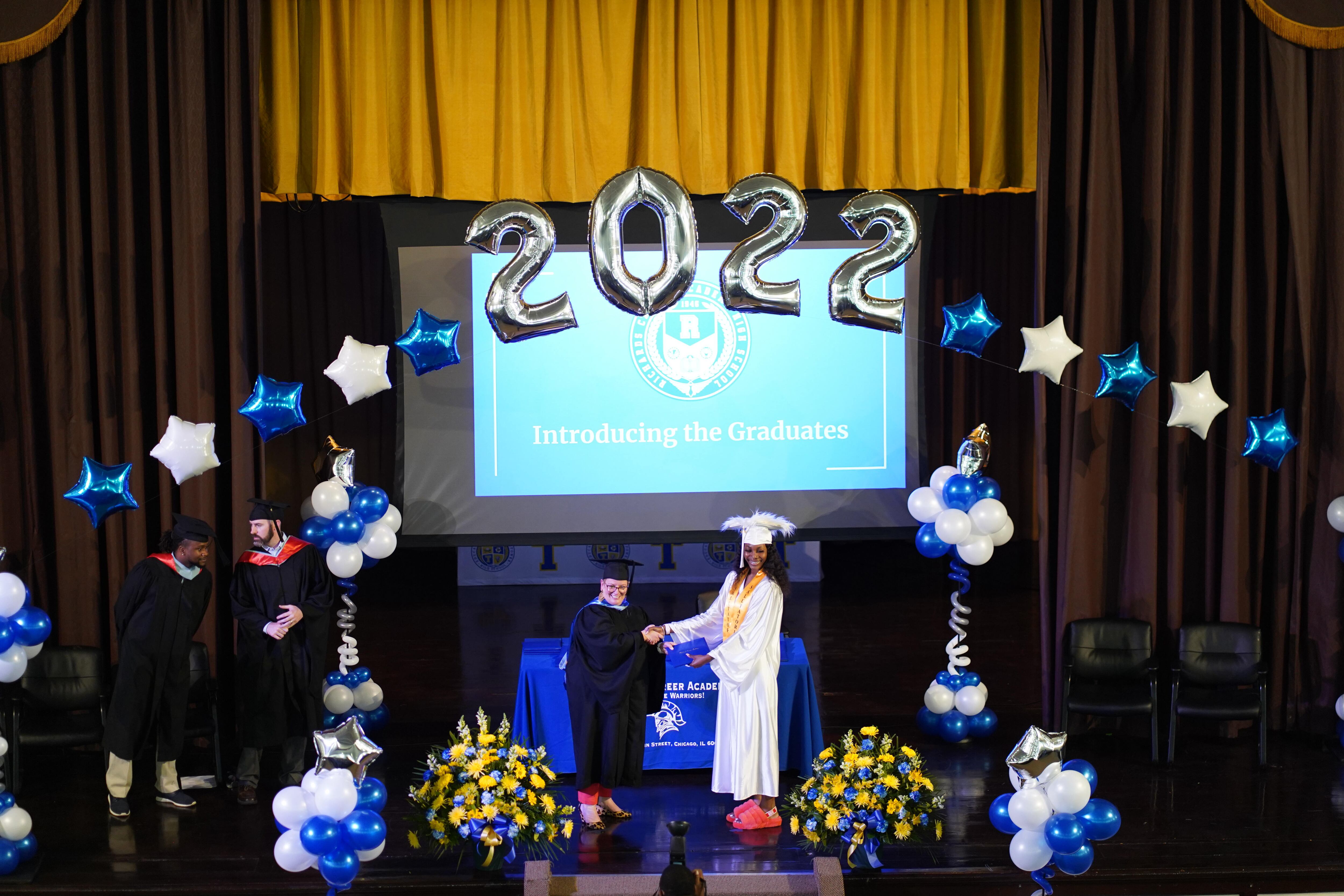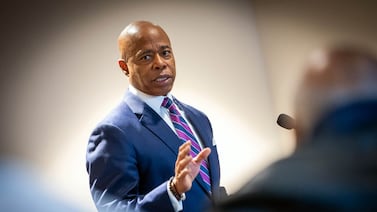Chicago Public Schools saw its highest four year-graduation rate in at least a decade, while also making strides in the number of freshmen on track to graduate, district officials said Monday. But the announcement came amid the release of sobering test scores known as the “nation’s report card” that indicated a steep decline in math proficiency among Chicago students.
Inside Gage Park High School on the Southwest Side, CEO Pedro Martinez celebrated the improvements in graduation rates, freshman-on-track rates, and $1.5 billion in scholarships, while lauding the accomplishments of the class of 2022.
Martinez said he is “very, very proud” of the four-year graduation rate, which increased to 82.9% last year, up nearly 3% from the 2020-21 school year.
The district saw marginal improvements to the five-year graduation rate, which stood at nearly 84% in 2022, up from 83.8% in 2021. About 89% of freshmen were on track to graduate on time, Martinez said.
While the district made strides in overall graduation rates, racial disparities and pandemic challenges persist among Black and Latino students. However, the graduation rate gap among racial groups narrowed last year.
The Monday announcement brought an upbeat turn to a morning that also saw the release of scores on the National Assessment of Academic Progress, or NAEP. Chicago’s scores dropped sharply in fourth and eighth grade math, wiping out roughly a decade of academic growth, and dipped more modestly in reading in those grades — a decrease the agency administering the test does not consider statistically significant.
Martinez acknowledged that proficiency rates had declined among elementary and high school students, but expressed confidence the district would see a rebound across grade levels this year.
“We just know last year was a very difficult year,” Martinez added. “We feel comfortable with the structures that we have in place this year that we will have a strong recovery.”
Last year, amid ongoing disruption from the pandemic, Chicago hit a five-year graduation rate record for the third year in a row, with 83.8% of students graduating.
All racial groups saw upticks, though white students’ rate grew the most. Black boys — a group district officials have deemed a priority — logged a comparable increase.
In 2021, the four-year graduation rate slipped slightly, with 80.2% of high schoolers graduating on time. That year, the district also touted its lowest dropout rate ever, at just below 4%.
Chicago district leaders take special pride in the growth of graduation rates over the past decade. In 2010, the overall graduation rate stood at just 55%. The district has also made headway in narrowing racial and gender disparities in graduation, though significant gaps remain.
In the 2022 data, the graduation rate for Asian American students, the highest in the district, was 14 percentage points higher than that for their Black peers.
Graduation rates also continue to lag for students with disabilities and English language learners.
In total, 21,205 district students got diplomas last spring compared to 20,722 in 2021.
“Today’s announcement is very encouraging,” Martinez said. “But we also know there’s still a lot of work to do, especially as we’re recovering from a pandemic.”
Mauricio Peña is a reporter for Chalkbeat Chicago, covering K-12 schools. Contact Mauricio at mpena@chalkbeat.org.
Mila Koumpilova is Chalkbeat Chicago’s senior reporter covering Chicago Public Schools. Contact Mila at mkoumpilova@chalkbeat.org.








